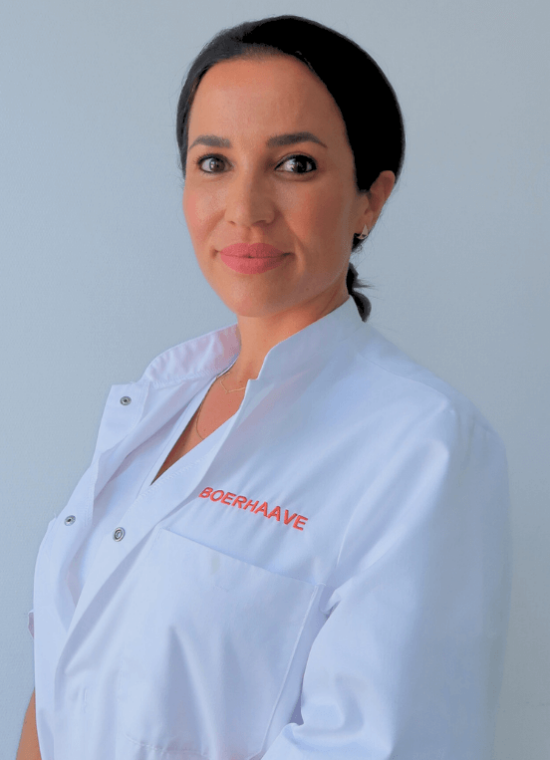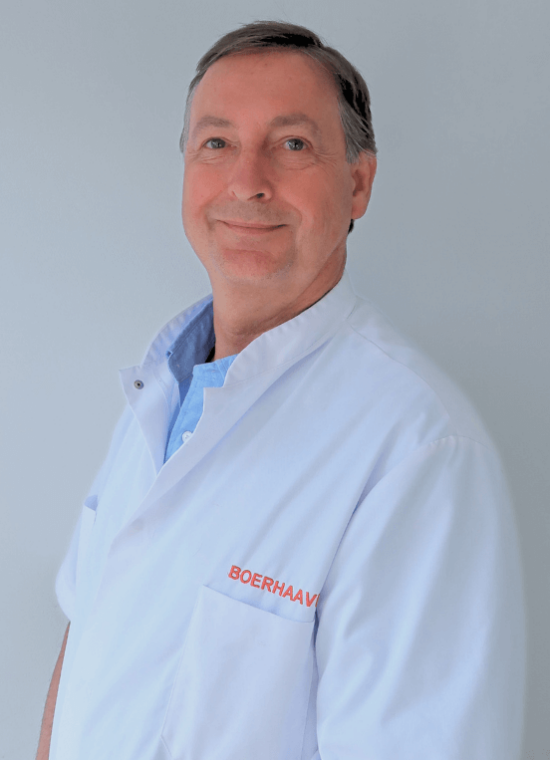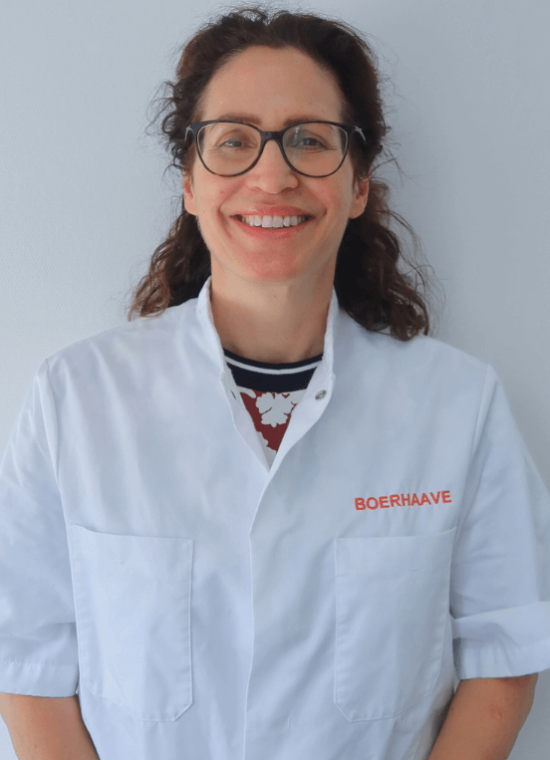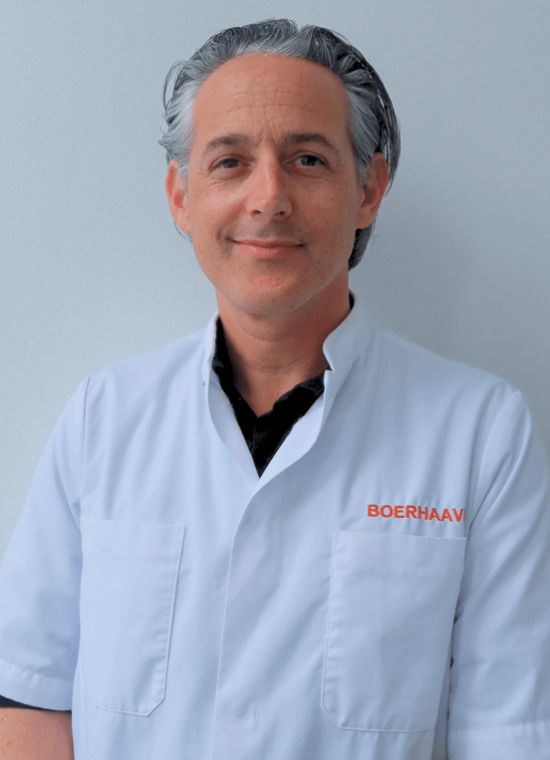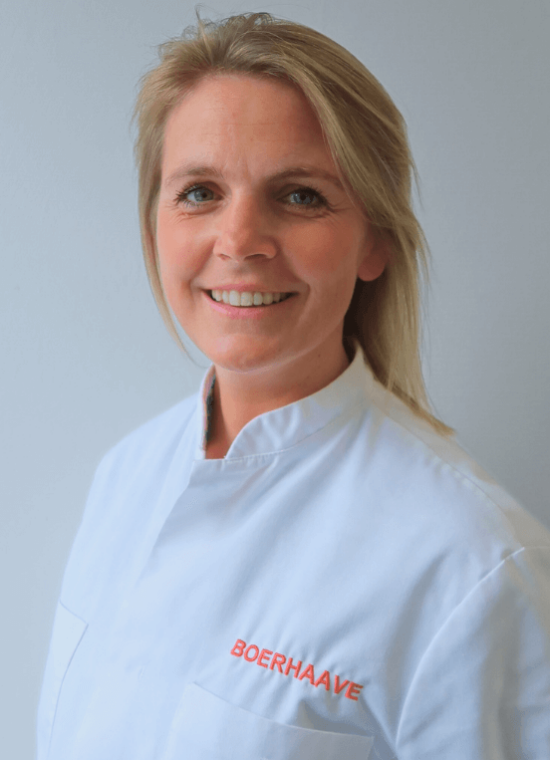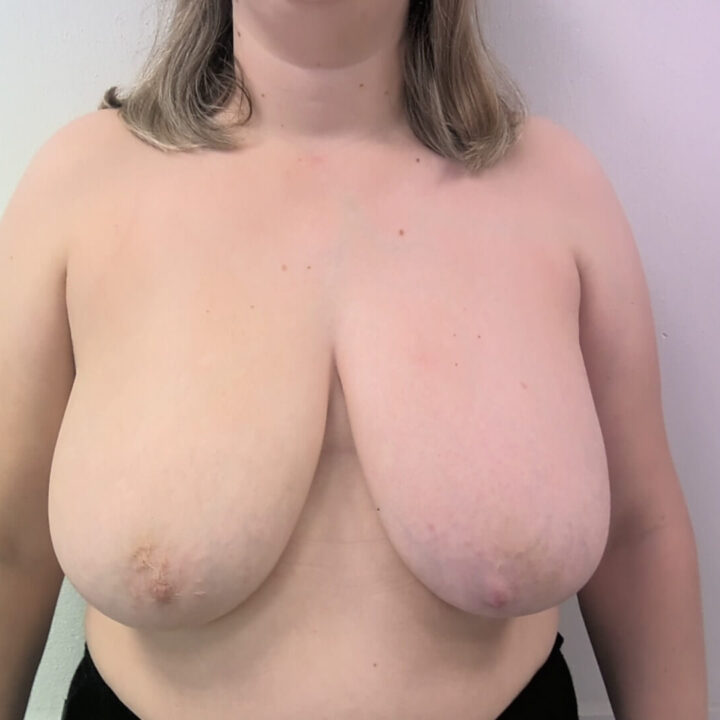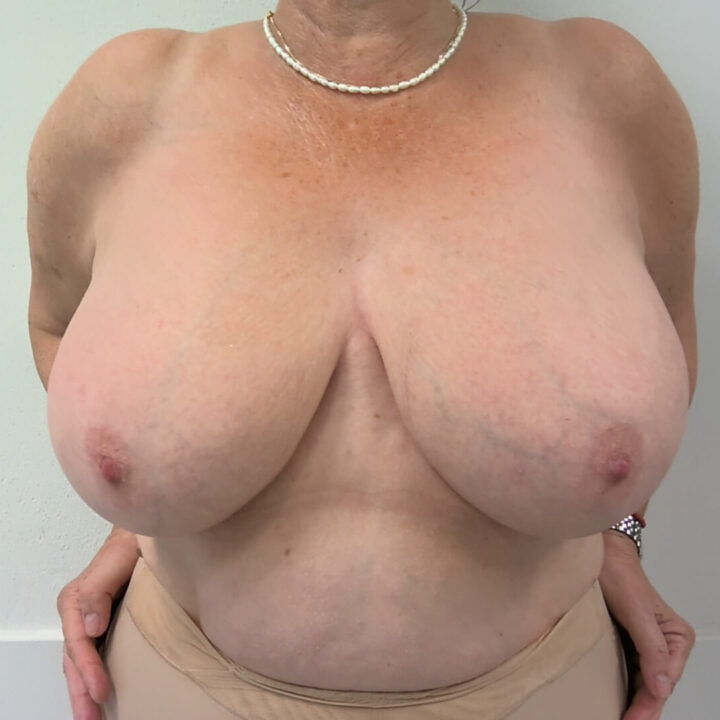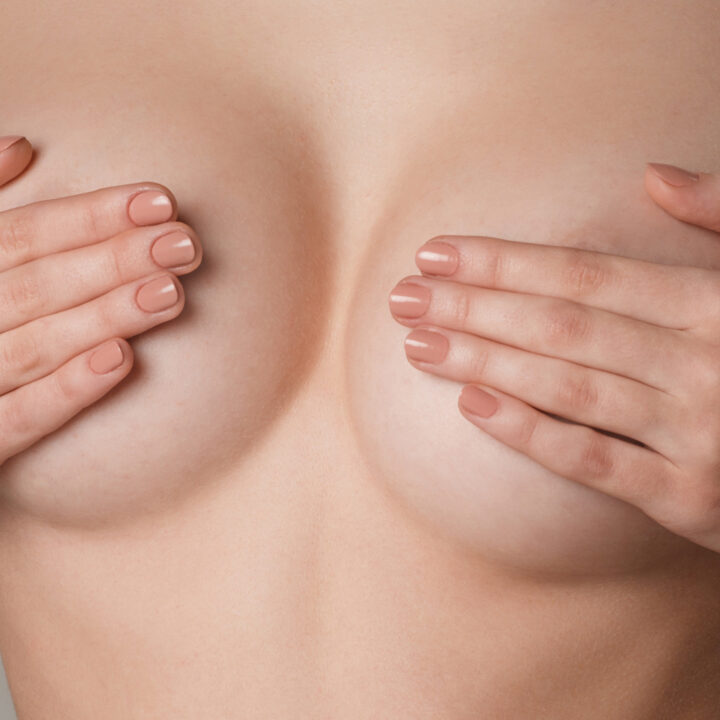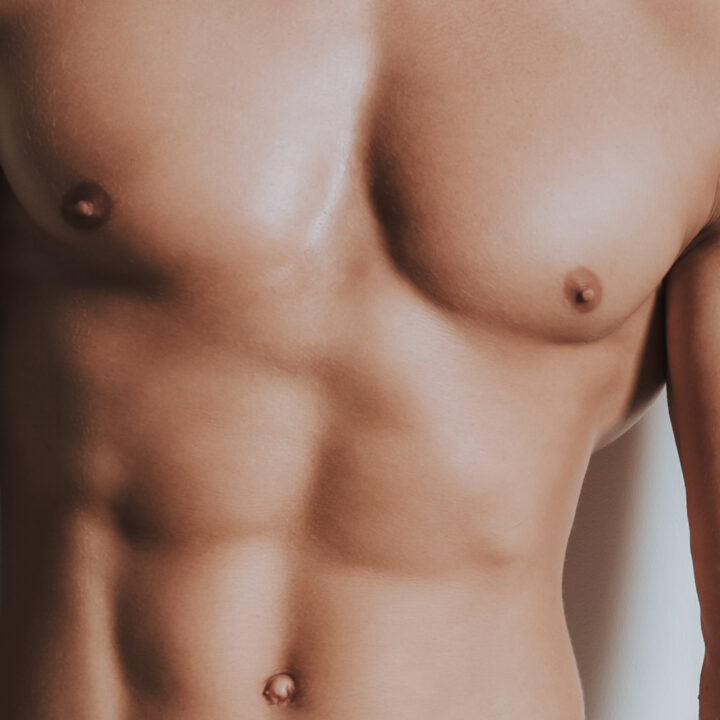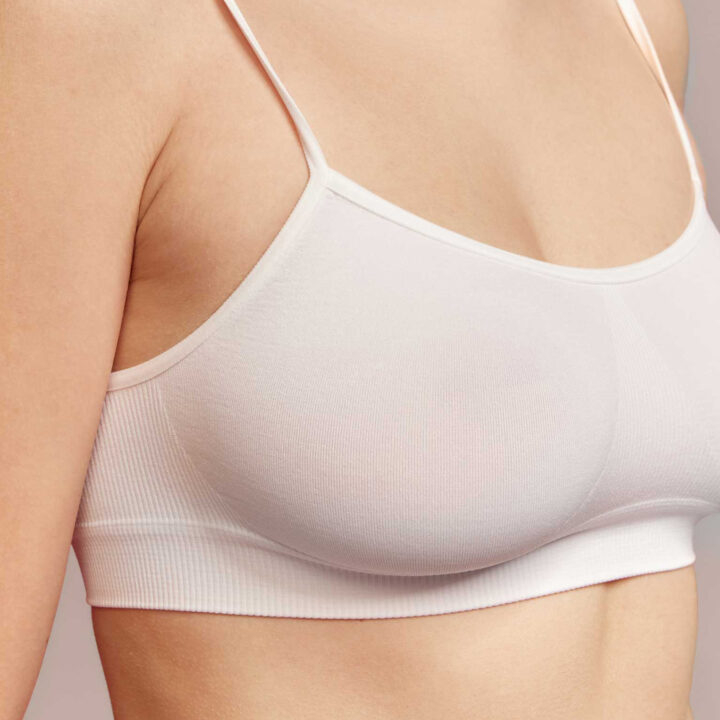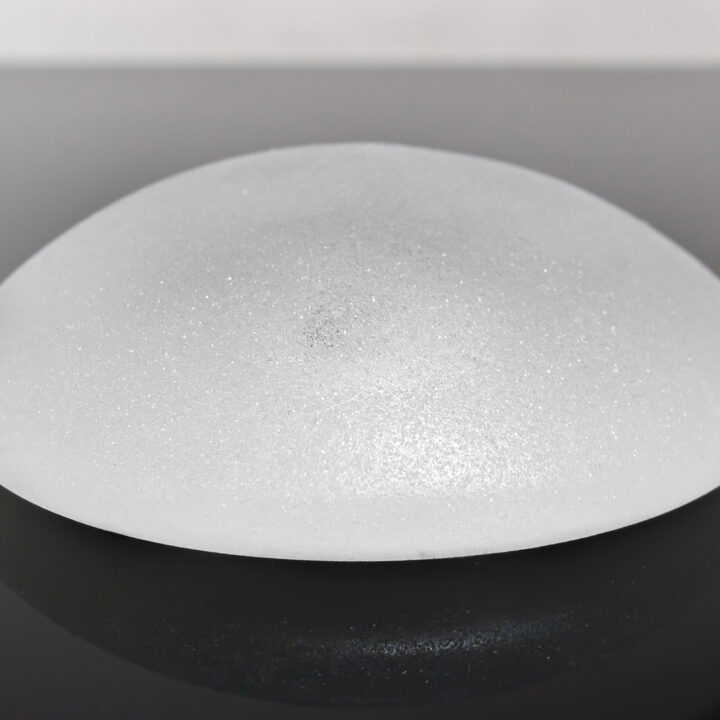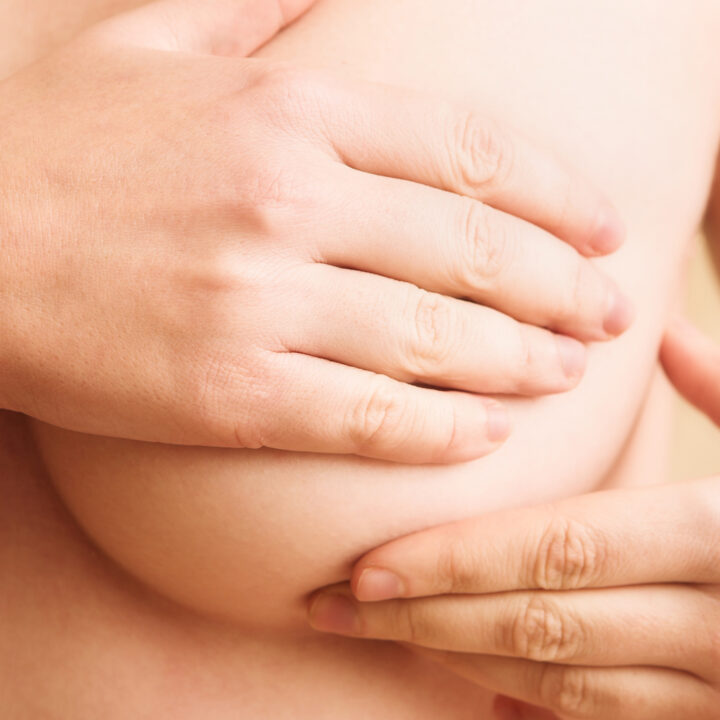Breast reduction
Breasts develop in puberty. The size and shape of your breasts are primarily determined by your genes. Other factors affecting the size, shape and firmness of your breasts include weight, pregnancy and condition of the skin and mammary gland tissue.
As the skin loses its elasticity, large breasts can easily start to sag. Women considering a breast reduction procedure often have neck, shoulder and back complaints. They may also be unhappy with their large breasts from an aesthetic point of view. A breast-reducing procedure can remedy these complaints, and bring the size of the breasts more in line with the shape of the rest of the body.
What does the breast reduction cost
We guide you step by step before, during and after treatment
01 More information
The size of women’s breasts is largely determined by their genes, but there are also other factors that play a role, such as body weight, pregnancy, breast-feeding and hormonal changes. Overly large breasts can make women feel extremely unhappy. As a result of their breasts, they may for instance have backache, neck pain, grooves on their shoulders from their bra straps, problems in finding clothes that fit and discomfort when doing physical exercise. In many cases, a breast reduction offers the perfect remedy.
A breast-reducing procedure involves making the breast smaller by removing some of the breast tissue and at the same time performing a breast uplift.
A breast reduction may be an excellent solution for sagging breasts that still have sufficient breast tissue.
Related treatments
A breast reduction is often combined with a tummy tuck. This combination is also referred to as a mommy makeover.
Simply ask your plastic surgeon about these options.
Alternative treatments
A breast reduction is not a medically necessary procedure. As an alternative to plastic surgery, you may opt to use external breast prostheses or padding to raise and support sagging breasts. There is no alternative for a complete breast reduction. If you are interested in a minimal reduction, it is possible to have a breast reduction by means of liposuction.
02 Consultation
Because everyone is different, it is not possible to decide whether you are a good candidate for a specific breast reduction procedure until your consultation with the plastic surgeon. The consultation will also look at which type of breast reduction is most suitable for you.
The consultation is divided into two stages.
The first stage is a personal advisory session with the plastic surgeon to discuss medical aspects and what you are wanting to achieve with your breast reduction. The plastic surgeon will take photos and examine your breasts. Important aspects to be taken into consideration are the elasticity of your skin, the quality and volume of mammary gland tissue and any irregularities in the mammary gland. Detailed information on these factors will help to make the right decision. Your breasts will then be measured. Based on this information, the plastic surgeon can suggest the type of breast reduction procedure that would best suit your wishes.
In the second stage, the plastic surgeon will show you before and after photos of breast reduction procedures previously performed. They will also discuss the pros and cons of the breast reduction, possible complications and any risks with you. The consultation will take about 45 minutes altogether.
You will then have an appointment with a consultant about the general aspects to be arranged with respect to your breast reduction procedure. The plastic surgeon and consultant will focus as much as possible on you personally, any case history you may have and your specific circumstances.
03 Procedure
Before the procedure, the plastic surgeon carefully marks out on your breasts what they are going to do in accordance with the treatment plan. The general anaesthetic is then administered.
The operation is then performed following the jointly agreed treatment plan. There are many options for carrying out a breast reduction. The size and shape of your breasts are important factors in deciding which surgical technique to apply. Your personal wishes with respect to the end results also play a major role.
The most common technique involves making three incisions. This is also referred to as the anchor technique. The first incision is made around the areola, the second runs vertically downwards from the lower edge of the areola to the breast crease, and the third runs horizontally following the body’s natural curve in the breast crease. The excess mammary gland tissue (including skin and fat) is removed. The breast is then reconstructed in accordance with your specified wishes.
With a breast reduction, the breast tissue is shifted upwards and skin and breast tissue are removed. Depending on the new position of the breast, a hole is made in the skin where the nipple is to be stitched in place. The open skin edges are stitched from the nipple down to the crease under the breast. Once the excess skin and tissue have been removed, the breast can be reconstructed. The wound is covered with a gauze dressing and a support bandage.
The scars on both breasts are in the shape of an anchor. The bottom of the anchor follows the natural breast crease. The scar then runs from the middle of the breast crease upwards to the nipple, with a small circle around the areola. Once they have healed, the scars in the breast crease and around the areola will barely be visible. The section of the scar running vertically from the breast crease to the nipple will often still be visible.
All in all, the procedure lasts 2 to 3 hours.
04 After care and recovery
After the breast reduction, you will stay overnight at the clinic. After the operation, you will be taken to the recovery room, where your blood pressure, heart rate and other vital signs will be monitored. You will stay there for about half an hour. You will then be moved to a bed in the day care department, where you will stay for the night. You cannot go home until the following morning.
Sports bra
After the breast reduction, you will be given an appropriately sized sports bra to wear. You may first be given a support bandage, which will then be replaced with a sports bra when you come for your first check-up appointment. This sports bra is provided by the clinic free of charge. It is important that you wear the sports bra for the next 6 weeks, day and night.
Post-procedure pain
In the first few days after a breast reduction, your breasts will feel painful. You may also feel slight pressure around the treated area. The skin around the treated area will be taut and stretched. This is because the skin has to adjust to the new size of the breast. You may also feel muscle pain.
As with every surgical procedure, the body takes time to recover. The treated area will initially be bruised, sore and swollen. The scars may also be reddish in colour and raised immediately after the breast reduction. You shouldn’t worry about this, as it is your body’s natural reaction.
The breast tissue and skin around the breasts have to adjust to the new shape of the breast. But this adjustment takes time.
Scars after a breast reduction
You must not expose the scars to the sun for a couple of months. Nor should you expose them under a sunbed. However, if you cover them up, it is possible to lie in the sun to tan the rest of your body. For the first year, always use factor 30 or higher when you are in the sun, to protect your scars properly. At your first check-up, you will be given a scar care cream to take home with you free of charge. If you regularly apply this cream to the closed wounds, you increase the chance of them healing nicely.
05 Results
The final results of a breast reduction will not be visible until after a couple of months. Initially, you will feel some discomfort, but after a couple of months you will be able to enjoy your breasts, with their new shape and possibly fuller volume. Many women feel a boost in their self-confidence after a breast reduction. They will also be able to enjoy activities such as doing sports, or simply negotiating the stairs, in much greater comfort.
The results of a breast reduction are generally permanent. If the procedure is combined with implants, the implants are intended for lifelong implantation. As long as your breasts keep feeling supple and have a nice appearance, there is no reason to replace the implants. After ten years, you may come back to the clinic for a check-up.
Scars
After a breast reduction, the bottom scar will follow the breast crease under the breast. There is also a barely visible circular scar around the nipple. A vertical scar running down to the breast crease may indeed be visible. If you wear a bra or bikini, the scars will be gone. The plastic surgeon will do everything they can to ensure that the scars are virtually invisible. The scars will initially be red and swollen, but this will start to fade after a couple of weeks. It is useful to know that a scar takes 1 to 1½ years to completely calm down.
Take care to keep the scars out of the sun, and look after them carefully. The clinic will give you a special scar care cream to take home with you. After the first year, always use factor 30 or higher when you are in the sun, to protect your skin.
06 Risks and complications
It is important you are aware that every surgical intervention can entail risks and complications. Plastic surgery procedures are in principle carried out on healthy people, so the risks and chances of complications are low. We make sure any risks are reduced to an absolute minimum, by providing plenty of information, taking a thorough medical history (noting your case history, including medication, any problems experienced in previous operations, allergies, etc.) and applying our professional procedures.
Breast reductions are successfully performed on many people each year at the Boerhaave Medical Centre. The chances of any complications arising are luckily rare. You can help reduce certain risks by carefully reading through the instructions you are given prior to your breast reduction.
Possible complications of a breast reduction may be:
- Haematoma (blood clot under the skin which has to be removed)
- Adverse reaction to the sedation
- Haemorrhaging
- Infection
- Change in sensitivity
- Permanent scars
- Damage to underlying structures
- Unsatisfactory aesthetic result.
Breast-feeding
A breast reduction procedure involves removing some of the mammary glands. The plastic surgeon will obviously take the greatest of care when removing this gland tissue. However, in some cases, the milk ducts to the nipple may become damaged when the nipple is shifted upwards. As a result, it may be more difficult, and sometimes even impossible, to breastfeed after a breast reduction.
Smoking
Patients who smoke or use tobacco or nicotine products (such as nicotine patches and chewing gum) at the time of their surgery have a greater risk of complications, such as skin loss and impaired wound healing. People who are exposed to passive smoking may also have an increased risk of complications such as these. What’s more, smoking may have a negative effect on the anaesthesia, which may in turn lead to an increased risk of bleeding. People who are not exposed to tobacco smoke or nicotine-containing products have a significantly lower risk of such complications. It is important not to smoke for at least 2 weeks prior to the operation and to keep this up for the entire recovery process.
More information
Plan your appointment now in our agenda or let us call you back.

